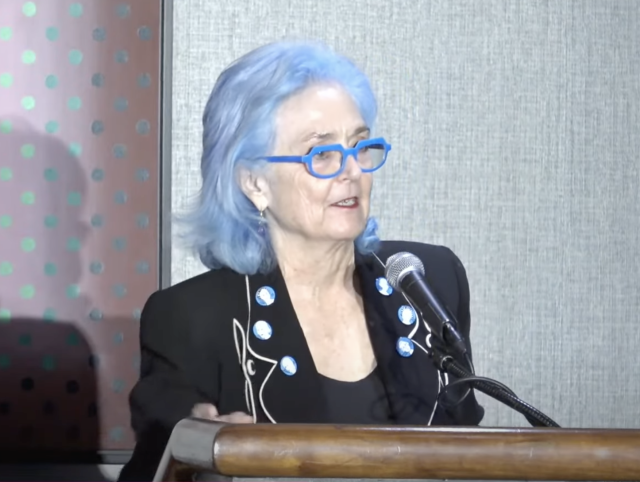 Mimi Pond, Keynote Speaker, SPX 2025 Ignatz Awards: "I'm a cartoonist, and I notice things!"
Mimi Pond, Keynote Speaker, SPX 2025 Ignatz Awards: "I'm a cartoonist, and I notice things!"There are writers who slip into the margins of culture and there are writers who redraw the margins entirely. Mimi Pond has spent a career doing both. From her early days submitting work to National Lampoon to writing for Pee-wee's Playhouse, to penning the very first episode of The Simpsons, her wit has been stitched into the fabric of American humor in ways we barely notice until we look back and realize she was there, drawing the lines. Her graphic memoirs, Over Easy and The Customer Is Always Wrong, offered us a countercultural coming-of-age with the same sharp eye and tenderness that mark all her work. And now, with Do Admit! The Mitford Sisters and Me (Drawn and Quarterly, 2025), Pond turns her gaze to history, eccentricity, and obsession, bringing the famously brilliant, difficult Mitfords into her own imaginative orbit. To read her is to be reminded that intelligence and irreverence are not opposites but essential partners—and that the act of paying attention, in Mimi Pond's hands, is a kind of art in itself drenched in blue ink.
Pond is married to artist, Wayne White, and the mother of two gifted artists, Woodrow and LuLu White.
About Do Admit! The Mitford Sisters and Me
Mimi Pond delivers a luminous portrait of the Mitford sisters, a family whose charm and contradictions have garnered a rabid cult following.
Nancy, Pamela, Diana, Unity, Jessica, and Deborah were born to privilege in the early 20th century, though not to fortune. Their lives unfolded inside a household both grand and precarious, where eccentricity passed as tradition. A father (David) with money-making schemes that rarely held, a mother (Sydney) whose sternness could never quite conceal her vulnerability, governesses who came and went like the weather—all of it set against a country estate slowly surrendering to neglect.
From these unsteady beginnings, the sisters stepped out into the world. They became debutantes, wives, writers, and revolutionaries. They married into power, sought it, or fled from it, each one turning her life into a story equal parts dazzling and calamitous.
Do Admit! The Mitford Sisters and Me is a graphic novel that feels as if it were unearthed—excavated from years of reading, remembering, imagining, and drawing. Every page carries the weight of history and the lightness of invention, offering a world both vast and intimate. It's a lot to absorb. When I sat down to talk with Mimi Pond about the making of this book, I wanted to know: how does one map the terrain of so many emotions while also holding fast to the pulse of story?
 Mimi Pond's self portrait on mimipond.com
Mimi Pond's self portrait on mimipond.comTAMMI KELLY: Do Admit is a colossal endeavor, and every page is so intricate and emotive. How did you map out these emotional elements?
MIMI POND: Actually, the mapping out of the emotional elements was an important part because this book was done totally differently than any other comic I've ever done, where I always had a scribbled little script beforehand, or had written out the dialogue. Working like this, I know what it looks like in my head, so I don't have to note that like with Over Easy and The Customer is Always Wrong. I had written it initially as a conventional piece of fiction so I had that as a roadmap.
With Do Admit, I was just making it up as I went along. But, I just went chronologically, decade by decade. In the course of whatever year I was in, I was gauging who's got the most going on? What are the most emotional beats? And where do we emphasize those beats?
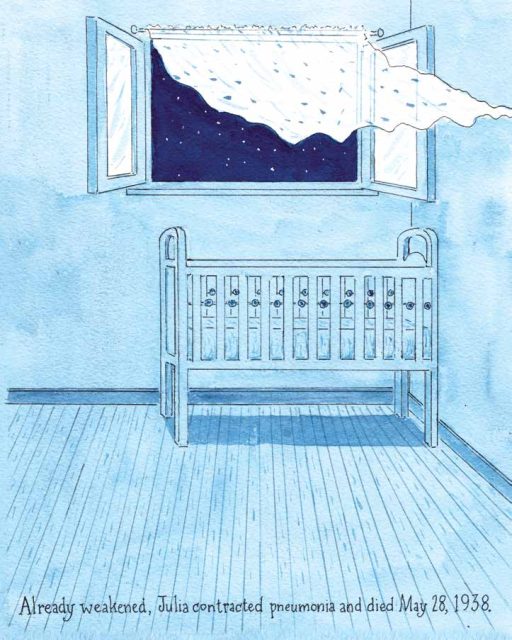 A silent room with an empty crib holds weight.
A silent room with an empty crib holds weight. "Nothing can prepare you for that kind of grief."
"Nothing can prepare you for that kind of grief."About three quarters of the way through the book, I thought, "She did this in only six years?" I'm thinking you worked on this for much more than six years; probably a seed was planted…
Well, I had been reading about them for years and years. They were like my hobby. So I had already read most of the books about them. I had absorbed this catechism—this Mitford catechism—of what had happened to whom, and when, and why. I had my source texts to go back and dip into so I was able to create an outline. Their lives had already been laid out. It was just a matter of mapping it out. For me, the big thing was, yes, but what did it look like?
How did you approach the challenge of transforming the Mitford catechism into images?
I wanted to be true to each decade's style, which is fun, visually, to do. And Pinterest became my best friend because it's not just a place where you plan your bridesmaid's party. It's a bulletin board, a place to organize images. I have a Pinterest board called Strong Mitford Tea, and I've got thousands for thousands of images organized. I have reference photos of them, houses they lived in. I have cartouches—those ornamental frames—I love that word. And 1930s and '40s perfume ads, movie posters, strange lettering styles. What does a British Destroyer from 1937 look like? I had to find out.
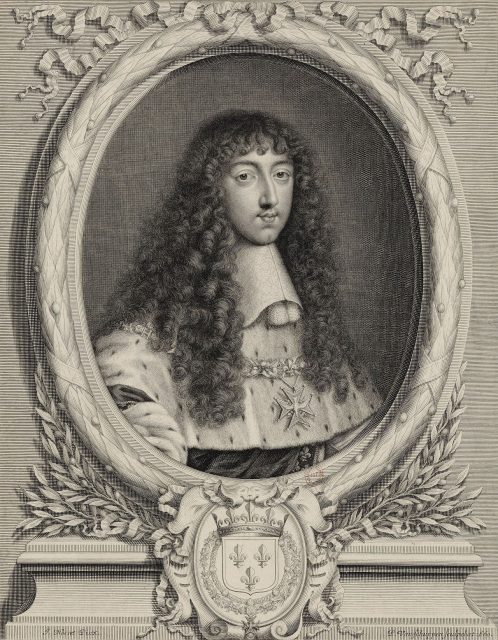 Reference image on Pinterest "Strong Mitford Tea" by Pieter van Schuppen / After Jean Nocret - Bibliothèque nationale de France, Public Domain.
Reference image on Pinterest "Strong Mitford Tea" by Pieter van Schuppen / After Jean Nocret - Bibliothèque nationale de France, Public Domain.The images are vast and the sequencing gives a sense of passing through time. Were there other techniques used in building this complex world in your storytelling?
First of all, I'm a biography freak. I've read every biography from Zsá Zsá Gabor's One Lifetime is Not Enough to graphic biographies. I like graphic biographies but unfortunately, many of them evolve into little more than just talking heads. I wanted it to be more than that and there was so much information to get across. I didn't want too much writing on each page, so I was trying to figure out different ways of using letterforms, different ways of conveying information in a way that excites the eye on every page.
In addition, you have set a tone with color, Prussian blue. How did the blue come about?
Color can never be anything but an emotional choice. That's what color is. It's what it feels like, if it feels right. I hate being literal about things so I don't want to say, "It's because they were blue bloods." That wasn't it. The color just felt right.
I used Daler Rowney acrylic ink. I was kind of messing around and settled on a blue. I bought a few different colored pencils, inks and water colors and I was playing around with them and this just had such a great range of tone to it, a tremendous range. And I knew that was it. That's the ticket.
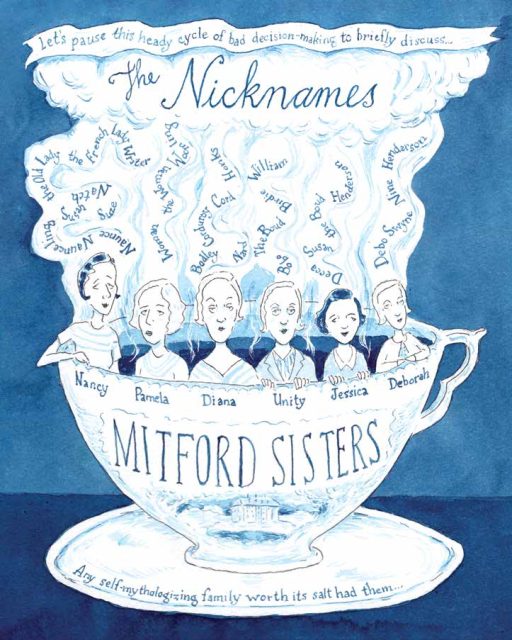
You can take just about any page out of this book and it stands on its own as a piece of art.
I printed out each page as I finished it and hanged them up so I could sequentially map out. You need to see how it's going to play out; which pages are two-page spreads. I took over my son's former bedroom as my office after working in a dank little low-ceiling strange little room in the basement that I called my drawing hole.
I wanted to put up cork on the walls and I looked and cork is fucking expensive! But you can find it on Facebook Marketplace for next to nothing. So I just hung a bunch of cork board on the walls because I knew that I wanted to map it all out.
The book is visually striking and complex. I'm also struck by language in Do Admit. Nancy, the oldest sister, wrote a book about language.
And it's fascinating because she hit this nerve like a root canal that's not been anesthetized. In Britain, after the war, everything changed dramatically. During the war, all the classes were thrown together for the first time. Aristocrats were working side-by-side with the working class. After the war the emerging middle class was becoming more prominent. I’m no sociologist and certainly not a scholar when it comes to the British but I think it’s obvious that the middle class was striving to become more like the upper class. In their use of language, Nancy was pointing out the glaring signals that they were putting out, telegraphing to the world that they weren't actually aristocrats.
Like paper napkins would be napkins to the upper class but the middle class would use serviette [cloth napkins] because that seemed like a fancier word. They used mirror and the upper class used looking glass. Notepaper was a middle class word and writing paper was upper class. Just these subtle differences and it just had people in an absolute frenzy.
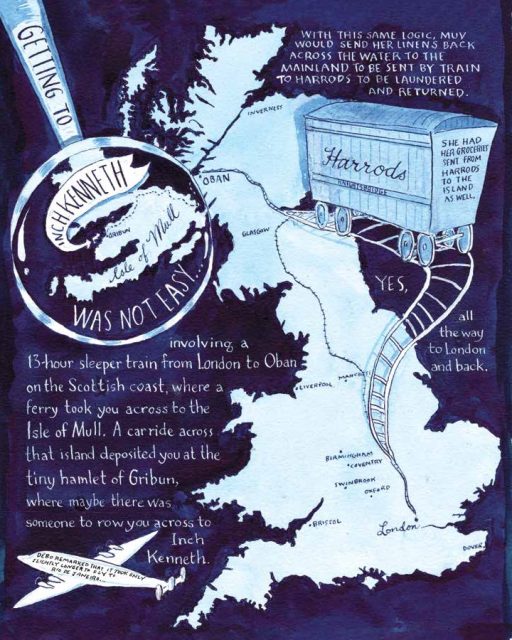 Transporting laundry was a 13-hour trip by train each way.
Transporting laundry was a 13-hour trip by train each way.One of the money-saving strategies Sydney had for the household was to do away with using cloth napkins at the dinner table because she figured out how much it cost to launder cloth napkins for a family of eight for a week. Paper napkins were just coming into being, but those were way too low class for them too use. Benji [Jessica Mitford's son] told me that when they ate, they just had to be extremely careful. They'd rather use nothing than something that seemed low class.
And this is nuts. When she was living in Inch Kenneth and she would send the laundry by train to London. And how much did that cost?
The Mitford sisters are each unique, and vastly different from one another. So the treatment for the different characters and their personalities is likewise. Pam, it seems, is a mystery.
She is! And even Benji, Jessica's son, told me once he remembers that she was screamingly funny. I think she and Unity had a sense of humor and a delivery so dry. Even with their extreme talent for articulation, they couldn't articulate how it was that Pam and Unity were so funny. I think a lot of it had to do with a certain deadpan expression and delivery.
One of the most striking pages in the beginning of the book deals with how Unity handles criticism by sliding under the table.
Sliding under the table, yes.
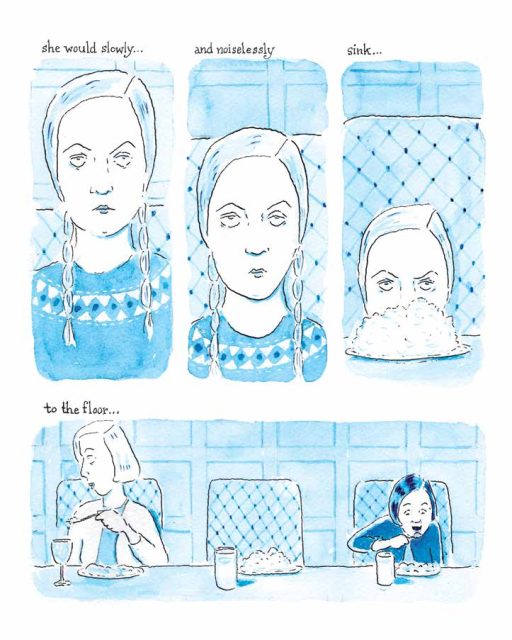 Unity's way of dealing with criticism
Unity's way of dealing with criticismIt's relevant in this day and age because we may have loved ones who — we can't wrap our brains around their behavior.
Neurodivergent. And they had no words for that or the tools for understanding or dealing with behavior. She just slid under the table into her own world.
It's almost like with Hitler and Nazism, she's kind of escaping into this world collecting Hitler souvenirs and Nazi banners everywhere. She truly believed he was sent by God. And Hitler was fascinated with her because not only was her name Unity Valkyrie Freeman-Mitford, she was also conceived in Swastika, Canada. I left that out of the book. Unity's father, among his many failed adventures, he had a gold mining stake in a town called Swastika. And he and his wife, Sydney, would go to Canada for months at a time to work this claim trying to find gold.
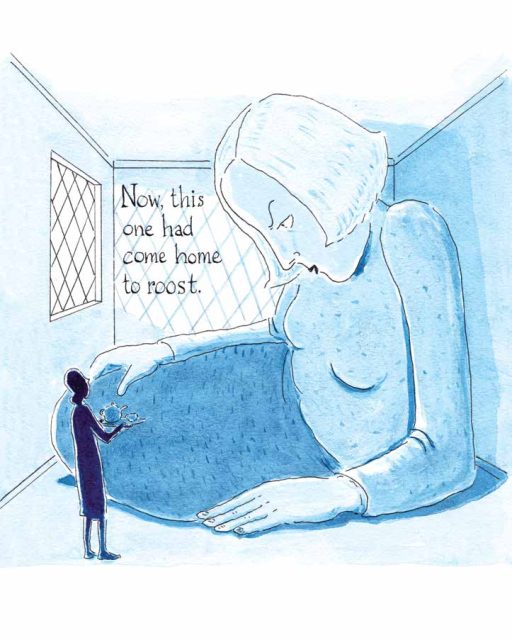 Pond's use of scale
Pond's use of scaleUnity shot herself in the head after Britain declared war on Germany. She lived for another nine years, and her scale in some of the pages is overwhelming.
Well, it makes you think of Alice in Wonderland, and people who take up all the air in the room. She's overtaken everything about poor Sydney's life. Her mother has to care for Unity over the last eight years of her life. One memory Debo [Deborah Mitford] had was she was always washing sheets because Unity was left incontinent due to the bullet in her brain. There were always sheets on the line.
And oddly, Unity was allowed to drive. She drove. She was allowed to go by herself to London. It would be interesting to know if anyone had a brain injury that's similar. My mother-in-law had a terrible brain injury from a car accident the family was in when Wayne was eight. She had to rehabilitate and learn how to do just about everything again. Then she just went back to being a housewife, seemingly normal-ish. But she wouldn't drive Wayne to school, or make lunches, things like that. It took him an hour each way to take the bus. It's not clear how much relates to brain injury or eccentricity or something else.
The role of women, whether they're waitresses, artists or aristocrats, feels central to your work. What do you hope readers take away about women's lives?
Women's lives count just as much as men's do, and they went out of their way to have as much influence–good or bad–on their time as they could even if they were behind the scenes or chronicling what they saw like Nancy did.
Diana was really smart in business. She harangued Hitler long enough that she finally got a German radio license to broadcast an English radio station from an island off the coast of Germany to Britain. There was not going to be any propaganda, and it was supposedly going to be light programming, shows for women, cooking, talk shows–the kind of average radio shows that were on the air. She couldn't do it in Britain because she was banned from doing anything like that.
I don't know what would have happened if she were successful. War was declared on Britain. The island where they build the radio station, I think, had been bombed. But she was going to have her own line of cosmetics. She didn't give a fuck what anyone thought. She was going to use her notoriety to make money for fascism.
And Jessica was on the other end of the spectrum. She had a big impact in her advocacy and work.
Yes. Jessica was a foot soldier in the field of Civil Rights. Literal foot soldier going door-to-door to rally people to help overturn a conviction of a Black man wrongfully accused of rape.
And fronting for families who wanted to buy homes…
Dinkey, her daughter, told me that she went to her 50th high school reunion, and this man came up and said, "Your mother changed my life. She fronted for my family so they could buy a home in a good neighborhood."

Jessica was a whistleblower. She even exposed a con run by an correspondence program under a game show host?
Bennet Cerf! He was a regular panelist on What's My Line? He started Random House Publishing. He was her publisher. He knew. He had published The American Way of Death. And she walks into his office and he opens himself up. She exposes him and she destroys his million-dollar business.
All these important writers were on the Board of the Famous Writers School. They had ads in every magazine and newspaper in America that ran for years and years and years. It was a multi million dollar business and it was global as well. And it was a really big scam. She called the writers and asked if they were actually involved with reading and grading papers. They all said, "No. I'm just on the Board. He's doing what?!"
It's kind of a sub-history of women and what they accomplish.
Yeah, we're always down there in the sub-basement.
What do you hope readers who know nothing about the Milfords take away from the book?
I hope that they take away a more entertaining and enjoyable feeling for history, and finding out about things. I kind of came to enjoying reading about history later in life because so much of the way it was taught to me growing up was about battles, dates, and peace treaties, all this dry stuff. For me, it's the personalities. It's all about the personalities and the intrigue.
 "To find out that Winston Churchill described de Gaulle as a female llama surprised in the bath. That's just comedy gold. You have to draw that." ~Mimi Pond
"To find out that Winston Churchill described de Gaulle as a female llama surprised in the bath. That's just comedy gold. You have to draw that." ~Mimi PondReading through Do Admit, I couldn't help trying to place what women like Barbara Shermund were doing as the events of the early to mid 20th Century unfolded. I had just read Tell Me a Story Where The Bad Girl Wins. Do you see overlap?
I love that book, and Shermund lived on her own terms and didn't fall into the conventional role of wife and mother. It makes me think about Nancy. She married young just to get out of the house. You had to get married just like you had to wear shoes, to be socially acceptable and not hurt your feet. That went south right away, and conveniently, the war came along and he was just gone. Later she had a hopeless relationship with Gaston Palewsky.
Nancy was able to explore her sexuality the way she wanted to. Bombs are going off. People are getting busy. Gaston come along and he was very charming, asking all the right questions, and eager to hear her stories. He was her audience, her muse. He provided that function for her and, apparently, he was great in bed. At the same time, he was a horrible philandering womanizer. But she was willing to put up with it because she really didn’t want to be married. She didn't want to be a housewife. I don't think she wanted to be a mother. That would have really cramped her style.
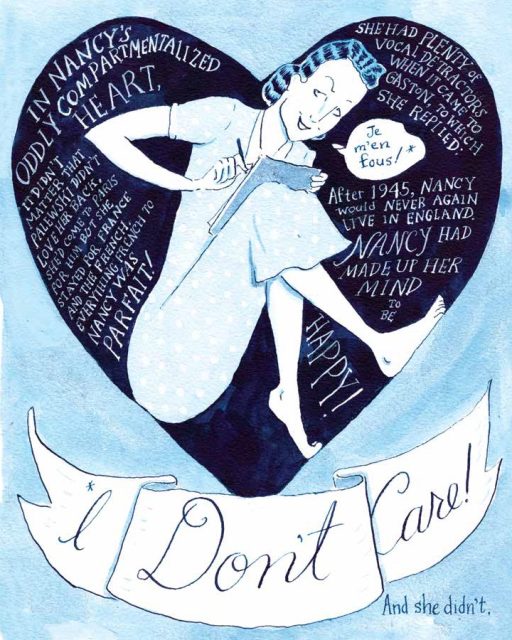 Nancy Mitford on her own terms.
Nancy Mitford on her own terms.As painful as it was–and it was quite painful for her–to witness this public embarrassment, Gaston's pawing over women in public, she had her own time space to devote to writing, which was her everything. Being a married woman at that time meant playing second fiddle, and she didn't want to do that. It worked for her until until the end of the relationship when he married an heiress of Jay Gould, and owned the most beautiful chateau in France. Ouch.
You are in this book, and there are parallels between your experiences growing up and the Milfords. You express a longing to have sisters. After writing about the complex relationships between these six sisters, do you still have that longing or do you feel fulfilled?
I had two brothers who would never agree with me about anything, hence do admit. As far as being fulfilled, what I came out of it after writing this book is maybe having sisters isn't necessarily the remedy (laughs). But they did stay in touch with each other and their mother made it a point to be supportive of every one of them. Jessica made her peace with her mother and she discovered she rather adored her. Sydney made nothing but sacrifices for her children. She did what she needed to do. As a mother, your duty is always to your children.
She also instilled in them the importance of trying to maintain connections as sister. As much as at odds they were, their letters to each other are wonderful. The only permanent rift was Jessica and Diana because that was just a bridge too far. It really was.
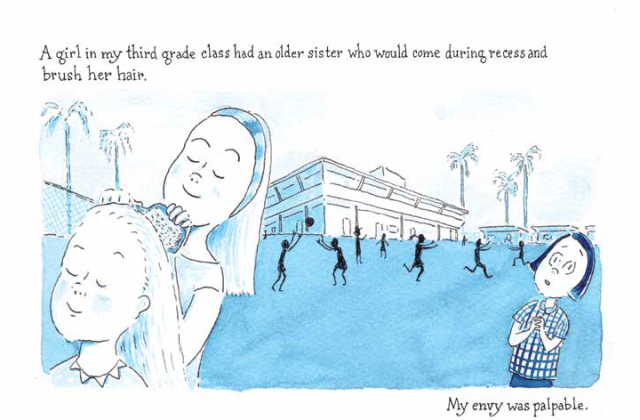 Childhood Mimi longing for a sister.
Childhood Mimi longing for a sister.The sisters were really mean to Jessica because she was the one who turned her back on the status quo. The rest were at ease with this is how things have always been, this is what our lives are in privilege, and this is they way things will continue. Jessica believed things could change. Everyone should have opportunity. We don't need class divisions, and we need to fight for people who have suffered terrible injustice. We should be on their side. The other sisters were willing to just look the other way. Jessica was absolutely radical in that respect. Jessica became wonderfully American in the best way.
Do Admit indicates that Jessica was her father's favorite.
Nancy asked him at the end of his life who he liked best, who he'd like to see coming around the door. And he said, "Jessica." It's unfortunate because she came back to visit but her mother said that there were conditions. There was no guarantee that the conditions–no arguing, not saying anything inflammatory–would be met. So he said fuck it. It would be impossible.
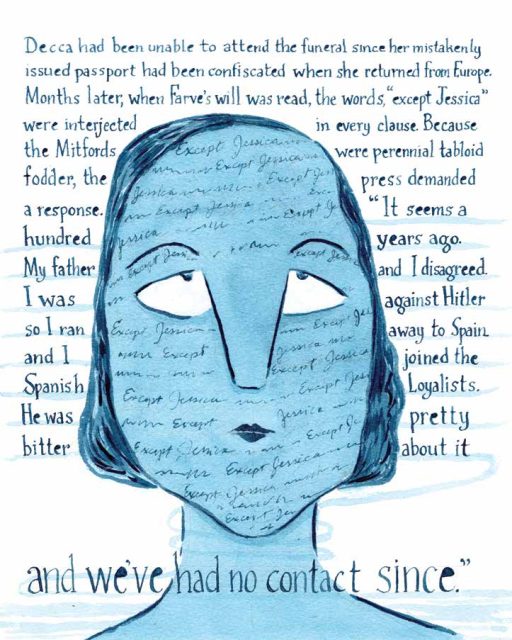 Except Jessica.
Except Jessica.Some pages turn words into art. That's a labor of love, isn't it?
My father had a shitty lifelong job working at General Dynamics–as a blue collar worker making printed circuit boards which are the precursor to motherboards that went into the nosecones of the Atlas Missiles, important went-to-the-moon kind of stuff. He was just a cog in that great machine but it was a good, steady job. He hated it but kept it for about 37 years.
But my father also did cartoons, and he made stained glass. At one point, he took a sign painting class at San Diego City College because he was going to do that on the side. He had these sign painting textbooks from around the turn of the century that he got from one of the many wonderful used bookstores that lined the streets of our neighborhood. He had textbooks on lettering and sign painting with all these beautiful type styles and face type. I just took to it like crazy. I just adored that.
Then in the '60s there was this explosion in graphic design that had a fascination with styles from the past in the use of typography. Like Seymour Chwast and Push Pin Studios—Seymour did the famous poster of Bob Dylan with the rainbow hair. He was one of the most legendary graphic designers. Chwast, Milton Glaser, and Edward Sorel, all of whom went to Cooper Union, started Push Pin Studios in the '50s. He's still alive, actually, Seymour Chwast. He's in his 90s.
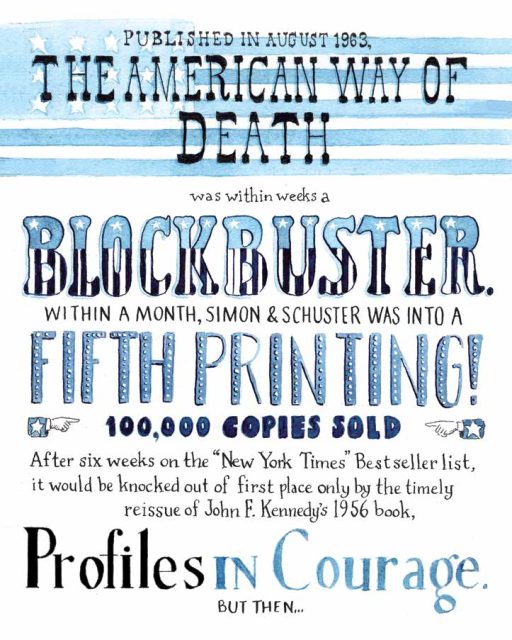 Visually-captivating words.
Visually-captivating words.You also include detailed drawings in Do Admit. The beautiful drawings of Walter Cronkite delivering the news of the assassination of JFK stand out.
I was seven when that happened, and it's my generation's [version of] 9/11, which happened when my kids were six and nine. I don't know what they will take away from that. I don't know what their memories will be because we heard it on the news in the morning then watched it on TV briefly. It was the first or second day of school and I had to walk with them chanting in my head, "Terrorists are not targeting Franklin Avenue Elementary School. Terrorists are not targeting Franklin Avenue Elementary School." I just wanted to get them out of the house. I didn't want them to be immersed in it. I'm sure they have their own memories of 9/11 now.
I went to the Texas Book Depository Museum in Dallas some years back, and all those same feelings flood back. It's horrible. I just tear up. Every time you revisit it, the emotions are oozing.
 Walter Cronkite delivering news of the JFK assassination - bereft of color.
Walter Cronkite delivering news of the JFK assassination - bereft of color.And this is where color choice comes in because this is the only page, other than the portraits in the front of the book, that doesn't have color.
It's an emotional choice. My parents worshipped Kennedy. When we got home from school, my mother dragged us to the nearest open church, a Catholic church. We were Methodists.
Jessica's book, The American Way of Death, had an impact on the Kennedys after the assassination.
Yes. The casket.
How did you come across that information?
There's an incredible YouTube video by this wonderful writer and mortician, Caitlin Doughty, who writes about the funeral industry. She dissembled that whole story. That's how I got that story. I reached out to her. She didn't get back to me but one of her assistants did. I asked how did she get that information. I needed to find another source and check the story to make sure it was true. It's actually in William Manchester's The Death of a President, a big giant whale of a book.
Do Admit include a list of resources for readers in both a bibliography and a list of websites. Are there any favorites of yours from the list?
The Mitford Girls is a good overview. There's biographies about Diana, but a lot of them soft peddle Diana's evil. She's just gotten a pass for so long. And any of the books written by the Mitford sisters.
Remembering that they could at times be unreliable narrators —
Family mythology. Nancy had written Pursuit of Love and Love in a Cold Climate. She used her family as fodder, and clearly, a lot of it was fiction. There were elements of the pieces of fiction that Jessica misremembered as actual events that she put into Hons and Rebels and was called out later by her sisters on that. She finally did admit that it wasn't true, but said, "If it wasn't true, it should have been."
You draw six sisters who resemble each other. Did you have any strategies for making each distinct?
I used reference photos and I tried to choose ones that seemed to capture the essence of each of their personalities. I had to learn to draw them so they looked different enough from each other so people could figure out who was who. It’s easily confusing, obviously, because families have family resemblances.
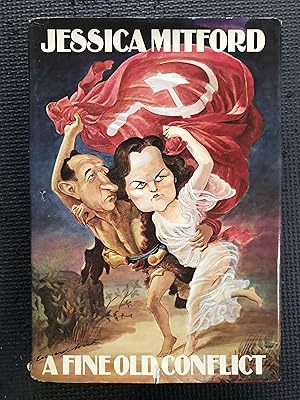 Fine Old Conflict book jacket artwork by Edward Sorel.
Fine Old Conflict book jacket artwork by Edward Sorel.What I learned is Jessica was the biggest challenge to draw because she was genuinely funny looking. And my way in was to cheat. Edward Sorel did the jacket cover for A Fine Old Conflict by Jessica Mitford. He caricatured her and husband, Bob Treuhaft as a parody of Adam and Eve fleeing the Garden of Eden.
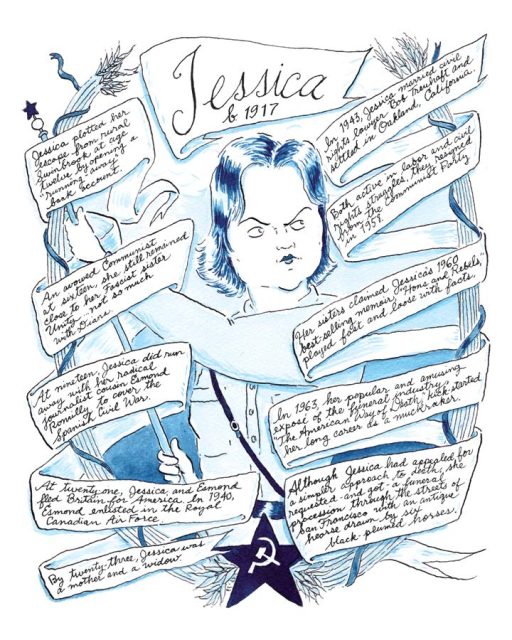 Pond's characterization of Jessica Mitford.
Pond's characterization of Jessica Mitford.I have come late in life to actually say that I can do caricatures because I was never really good at it. You just have to work on it. I wasn't interested in that for a long time, but I had to do it. With caricature it just comes down to the exact right stroke of the pen, the exact right expression. Sorel had done it.
 Pond's rendition of Unity Mitford contrasts Jessica's character, and a it holds a solemn, somewhat prophetic, tone.
Pond's rendition of Unity Mitford contrasts Jessica's character, and a it holds a solemn, somewhat prophetic, tone.All of the sisters shared a facial feature where there's no bridge on the nose. It goes straight up to the forehead. If you look at their profiles, the bridge of the nose doesn't dip.
How much digging did you have to do to get such a comprehensive history of the Mitford sisters?
I went as far as to travel to Chatsworth Manor, where Debo [Deborah Mitford] lived. Debo is an interesting one because as a child she witnessed all the drama her sisters went through. She observed and she was the least problematic. She dutifully married the younger son of a Duke and wound up with this giant house in her lap. She became the steward of the Mitford archives, which are at Chatsworth Manor now.

I was informed by the Duke himself that the archives are permanently closed. But the woman who's written a new biography of Jessica Mitford that's coming out in November informed me that's not really true because it's partially funded by the public. I didn't know that, and it was during Covid that I had asked to see the archives. My friend, Robin, who is also a wild anglophile and Mitford maniac, and I met in London, and we met Benji in Coventry where he lives and took a train up to Chatsworth. We got a tour in the spring of 2019. Benji drove us to Swinbrook and paid for us to spend the night there.
Robin and I got up the next morning found a leaflet in the hotel that said "Find Your Way to Asthall Manor" and it was very English. "Cross this field and turn left at the second sheep." We came across this road that looks like it's out of The Wind and the Willows, and around a bend stands Asthall Manor. And we're losing our fucking minds.
There's a woman with a trowel standing in the driveway who turns out to be the owner. I told her that I was writing a graphic novel about the Mitford sisters. She didn't take us inside. She was trying to be polite but wasn't too sure about us. She showed us this sort-of annex building like a stable or something that David Mitford had turned into a library and music room for Nancy and her brother. They now have dramatic musical productions there. The gardens are open to the public–there's a sculpture garden. Since then, she's become a social media friend, and offered to have a book event there if only the British publisher would pay bring me over there. They haven't yet.
Shary Flenniken said if her memory serves her right, you wrote to the Queen.
Oh, I wrote to the Queen when I was about 10 years old. I had checked out a book from the library called something like The Royal Family on Horseback. I must have been about 11, actually, because I was taking riding lessons with my best friend. I didn't realize this until much later, but my parents realized that getting into horseback riding is a slippery slope, and it's an expensive one. My friend's mom was the one who was willing to drive us 30 minutes out into the country to the stables. I had to use my own birthday and Christmas money to pay for those lessons.
I decided to write to the Queen and ask her advice about horseback riding. I have a framed letter from one of her ladies in waiting named Katherine. It's hanging up in our bathroom. It says, "The Queen is so pleased to learn of your interest in horseback riding. Thank you for your letter." Something like that. Apparently, they did this all the time. They must have had an army of ladies in waiting writing to children in the United States and Canada and all over the commonwealth to get personal notes back from the queen.
Writing that letter shows great initiative.
I loved letters. I loved getting letters. I loved the whole idea of getting mail. I met Ray Bradbury when I was 13 years old at the San Diego Comic Convention. It was still at UCSD. I grew up in San Diego, so I was going to them. It was an incredible experience. It was not like it is now. It was very personal, very intimate. They had this genius move where they're shining a spotlight on pop culture heroes who were completely in the shadows like Bob Clampet, Harvey Kurtzman. I saw Jack Kirby do a do a talk where he drew this rearing stallion and he drew a giant penis on it. You could literally rub elbows with your heroes. So I wrote Ray Bradbury, and he wrote me a Christmas card.
Is letter writing something that you continue to do?
Not in a long time. I know I wrote one when I was a waitress to Lilly Tomlin and her partner, something like "Do you need a joke writer or sketch writer?" And her partner wrote back, "Haha. Nice try." It wasn't altogether discouraging, but it wasn't exactly encouraging.
People connect more online now, and it's not the same. But some of the connections can be really strong.
You can learn a lot. Someone posted a video of Jim Woodring using a thing I never heard of, which was a glass eraser and I was like, "What is this?" And it made such a difference for me.
You gotta watch your fingertips with those because the little bits of glass can flake.
That's probably why they don't sell them in this country. They're not entirely perfect, but they made a huge difference in my ability to work on actual paper, making corrections. Online, you get to stay in touch with people and you learn a lot in the process.
You were an art student. Were you picturing yourself doing something like this as a student?
At first, I was interested in children's books and illustrations in general. I became interested in cartooning and in art school at that time people didn't take it seriously. "Cartooning? Oh please!" Yet I'd show my teachers my cartoons and they'd laugh, but I got nothing but shit for wanting to make comics in art school. That art school now has a graduate program you can do in sequential art.
It was a great place to learn how to draw the human figure, composition, and perspective–all the tools you need to draw anything–because you have to learn how to draw everything if you want to make comics. You don't have to do it particularly well. You just have to make it convincing enough in your style, figure out some workaround so that you can tell your story.
There's this idea that anyone can draw comics and it can be taught to non-artists. You have to learn to draw well enough to develop your own style so that you can put a story across.
With the storytelling component, you cover a lot of ground. In this, I notice water as a compelling visual element that carries a lot of emotional weight. Do you have pages that you struggled with to get the emotional impact you wanted?
Water as a emotional element wasn't a conscious decision, but thanks for noticing. Some pages had to be drawn three or four different times, or I'd draw it and think, "This just need to be a little bigger." I was just having a conversation with a young cartoonist who works digitally, and I told her that you just have to draw it again, just draw it until it's right. Draw it over and over. That does nothing but make you a better artist. Not to the point of over drawing or obsession, but you have to know when it's hitting the mark.
 "I had to redraw this page three or four times to get it right." ~Mimi Pond
"I had to redraw this page three or four times to get it right." ~Mimi PondFigure out when to scrap the page or when to use the eraser, the glass eraser or whiteout. Here, [drawing below] I spilled diluted blue ink on this page. It was meant to be white in the center but something tipped over and it just became what you see.
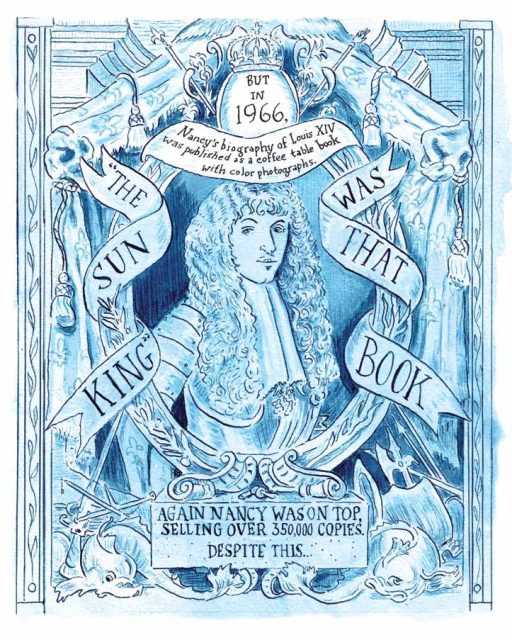 "It was so much work, was I going to do it all over again? No. The blue worked."
"It was so much work, was I going to do it all over again? No. The blue worked."With all of the exhaustive research, was there anything about the Mitfords that you had to leave out that you really wish that you could have included?
Well, there were so many more characters. Their mother had a friend, wealthy while she was married, then she was widowed, and her money was gone, and she was the original Debbie Downer. Mrs. Ham or "The Wid." She was so very negative about everything. Nancy had become very close friends with her as an adult. They corresponded and Nancy had to report to everyone else the latest Debbie Downer kind of things The Wid had said. And she was always dressed in kind of widow's weeds.
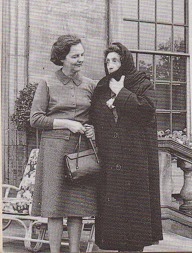 Jessica Mitford (left) and Mrs. Ham. Photo on Clothes In Books blog.
Jessica Mitford (left) and Mrs. Ham. Photo on Clothes In Books blog. Andrew Duke of Devonshire with Violet "The Wid" Hammersley.
Andrew Duke of Devonshire with Violet "The Wid" Hammersley.There were many other characters, but it was important to me to prioritize and focus on characters that move the story forward.
Do Admit has no chapters and no page numbers; nothing to distract the reader from the art.
Something that frustrated me as a kid was end papers on books that were illustrated beautifully, then you'd open the book thinking there will be more beautiful illustrations, and no! There's no drawings, just pages full of words, and I'd be so disappointed. I thought, what if you could have a whole book that was nothing but those kinds of images over and over again? That would be the thing to do. A book of end papers.
Do you find yourself thinking in panels and seeing people as potential characters?
Oh yes. Speaking of family code, in our family, our son was the head character designer on the Ninja Turtles movie that came out in 2023. He has an amazing Instagram account. He draws better than his father and I do. When he was growing up, if we'd see someone unusual or funny-looking, I'd say, "That's a comic." That's code for "cartoon gold."
I used to take the kids to the LA Farmer's Market on 3rd and Fairfax. It's been there since the 1930s. It's a permanent farmer's market with stalls. It's very quaint, right next door to the giant CBS Television studios. It's got food stalls, produce, a butcher, restaurants. Lots of tourists go there, and lots of people trying to get on shows like The Price is Right. There's a lot of people sitting or standing still for a long time, so it's a great place to go draw people.
We would get coffee and donuts and take our sketchbooks there. We called it "Drawing and Donuts." It's funny because Woody and his father just draw constantly. I used to always keep a sketchbook until I became a mother and it just became too much. I don't keep a sketchbook anymore the way Wayne and Woody do. My daughter, LuLu's more like me, always felt put upon to draw. She's a great artists, too. A lot of her work is three-dimensional. She draws beautifully. She paints fantastic. But somehow the idea of going to draw with her mom and brother wasn't appealing to her.
Art is important in your immediate family. Does your extended family understand what you do as an artist?
A lot of people don't want to hear about things they don't understand. They want to hear that you're a kindergarten teacher or a librarian, or at best, you illustrate children's books. That goes over like gravy on mashed potatoes.
 Pond's Mitfords in a Minute is a popular series of reels on social media.
Pond's Mitfords in a Minute is a popular series of reels on social media.Now the work continues. You haven't stopped talking about the sisters, and you're offering multiple ways to enjoy them. We have a slew of resources in the back of the book, Mitfords in a Minute, and merchandise. Is there more?
I'm considering doing Mitford Degree of Separation because they're so connected to everyone. I've gotta make a chart. There's Churchill and Hitler and JFK. Then there's degrees of separation from there.
The Milfords have brought so much. This is what I was working for, to be in the New York Times, to share the Mitford sisters artfully.
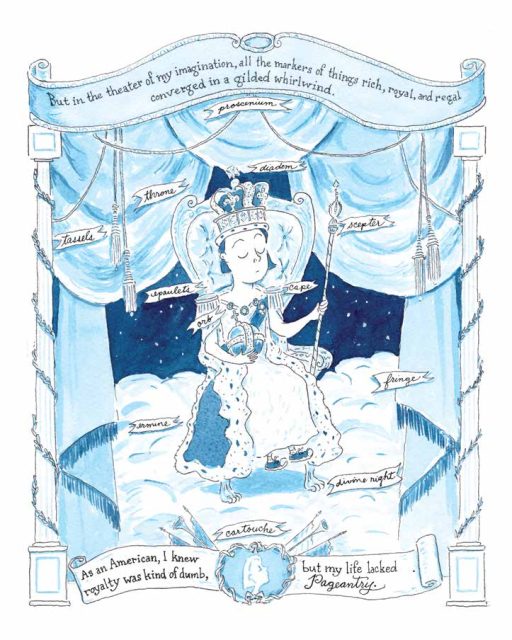 Childhood Mimi Pond.
Childhood Mimi Pond.Your book explores obsession, fandom and identity. What did your fascination about the Milfords teach you about yourself?
That's a good question. I have to think about it. I guess it gave me more confidence in my own voice, and my observations of things. More than that—what I learned working on this book—I learned to reconnect with childhood Mimi, the girl who just wanted to draw and dreamed of making stories with words and pictures, and the pure pleasure of drawing.



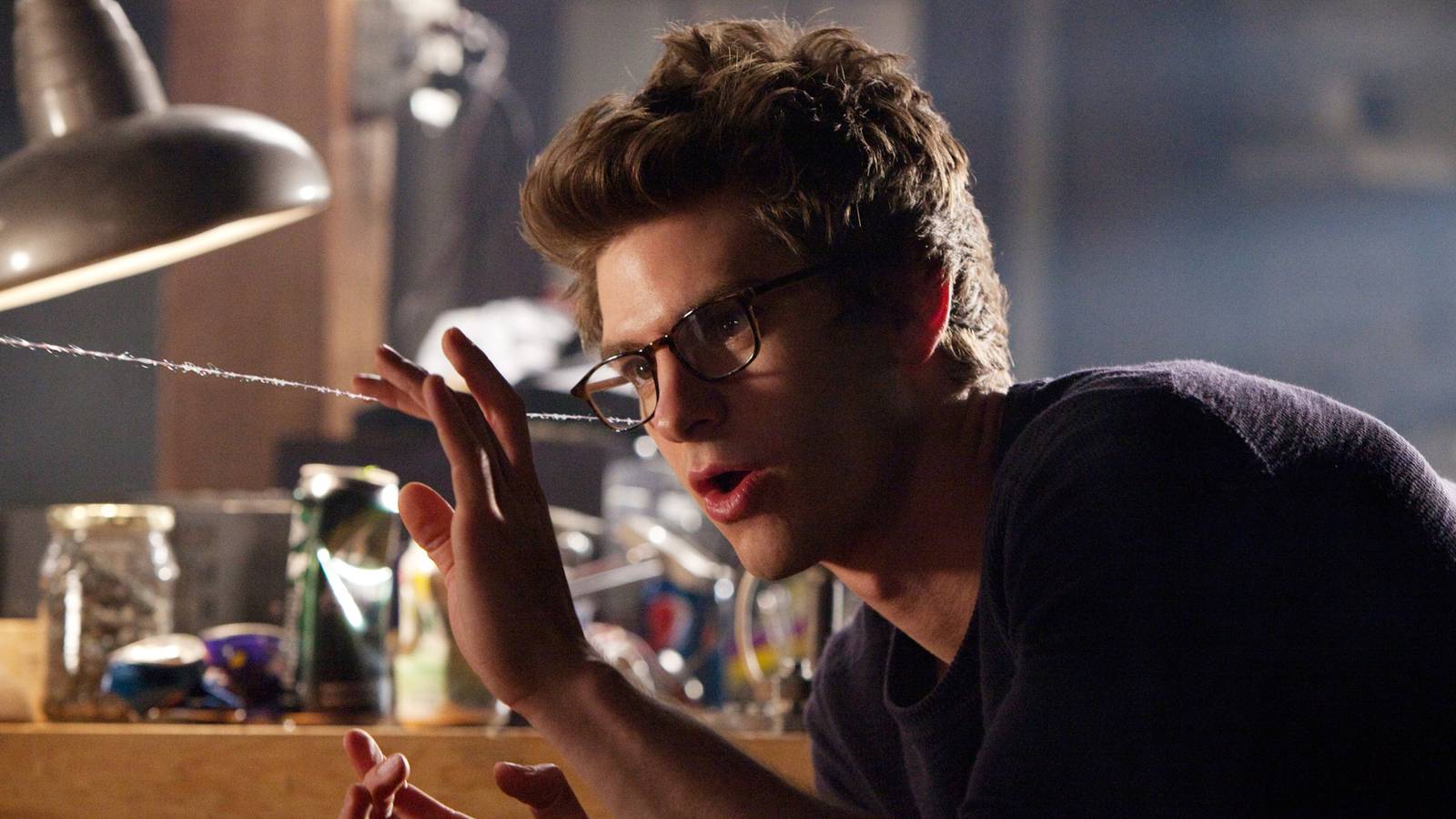



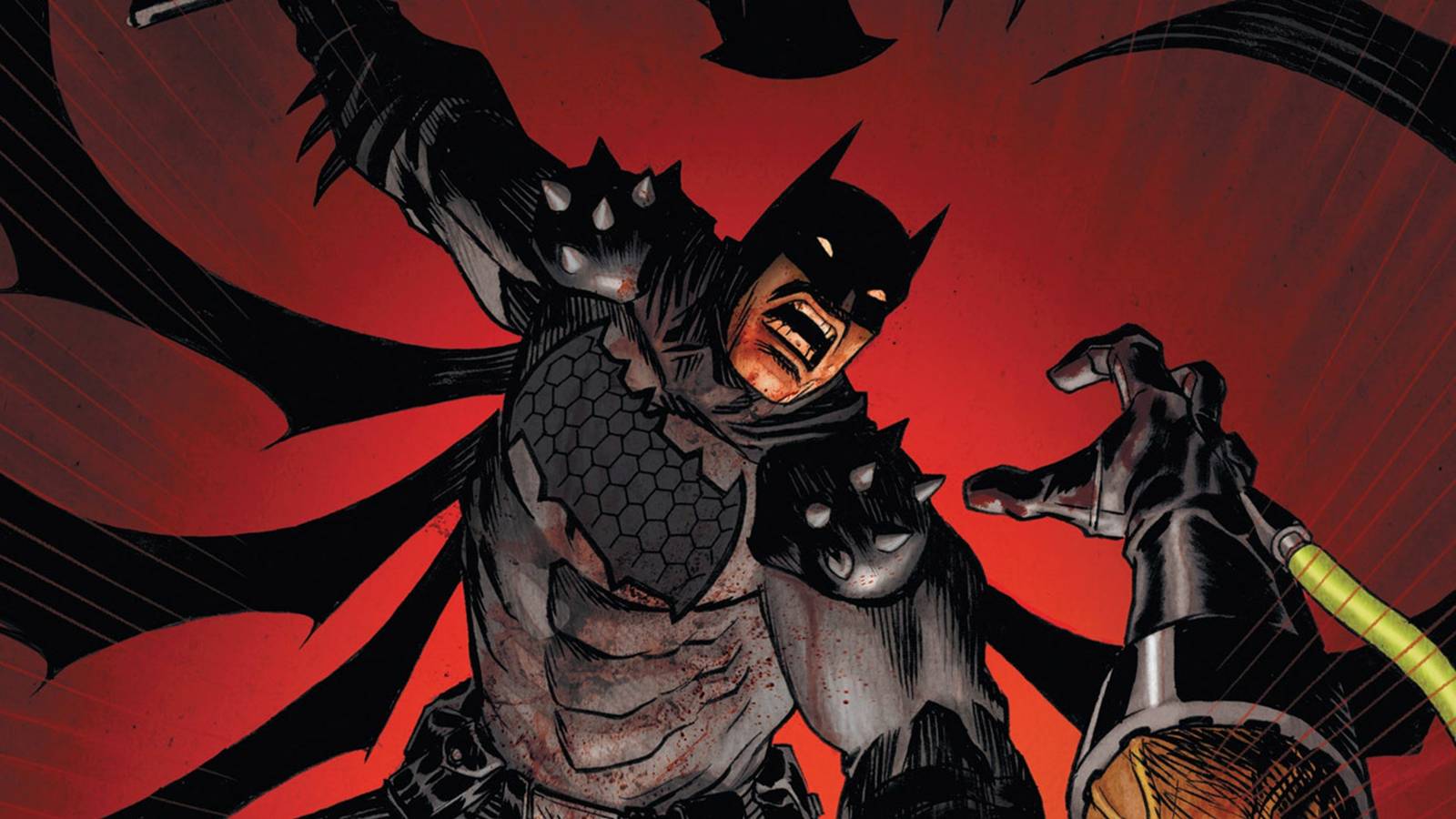

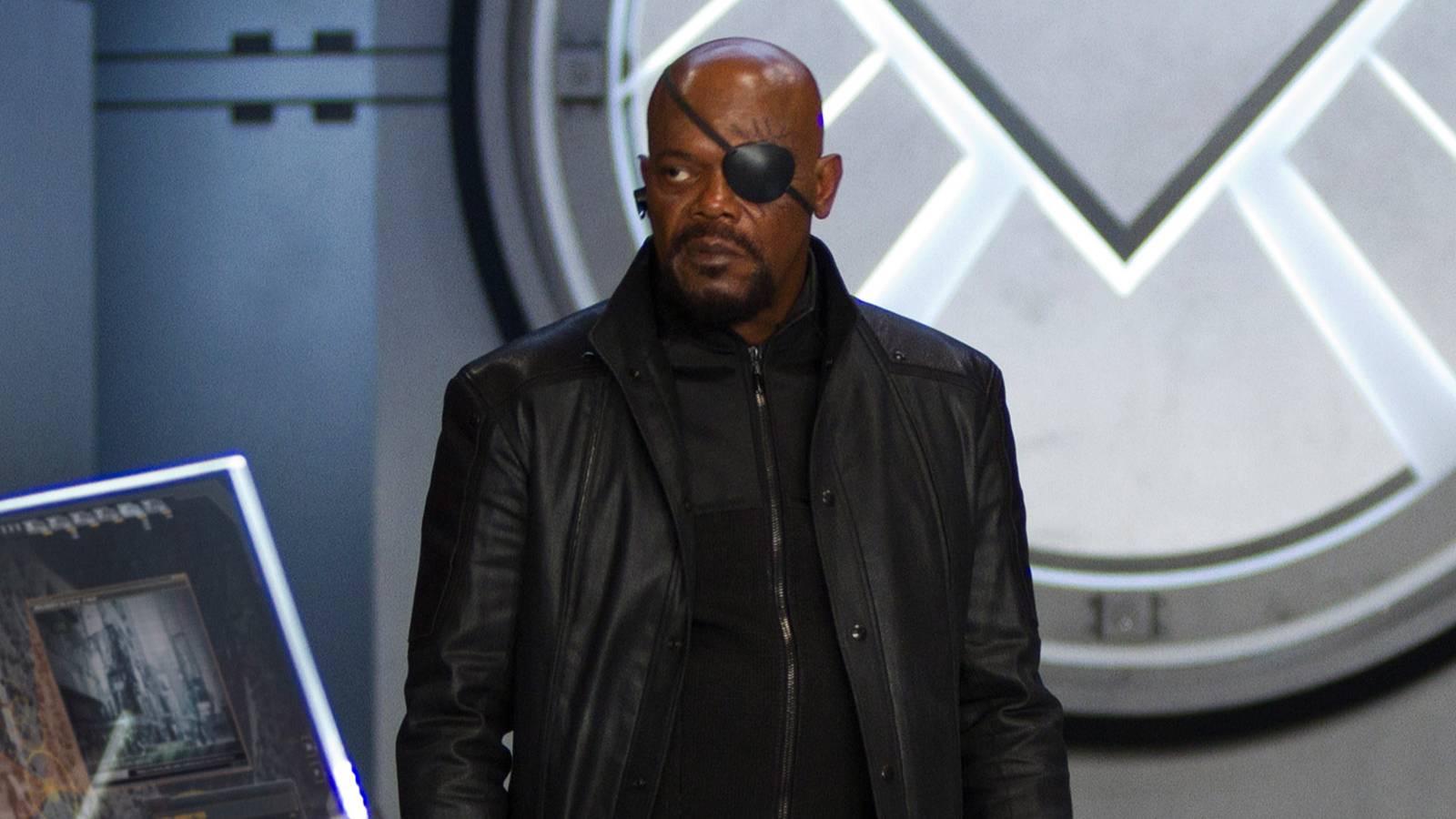



![Ghost of Yōtei First Impressions [Spoiler Free]](https://attackongeek.com/wp-content/uploads/2025/11/Ghost-of-Yotei.jpg)


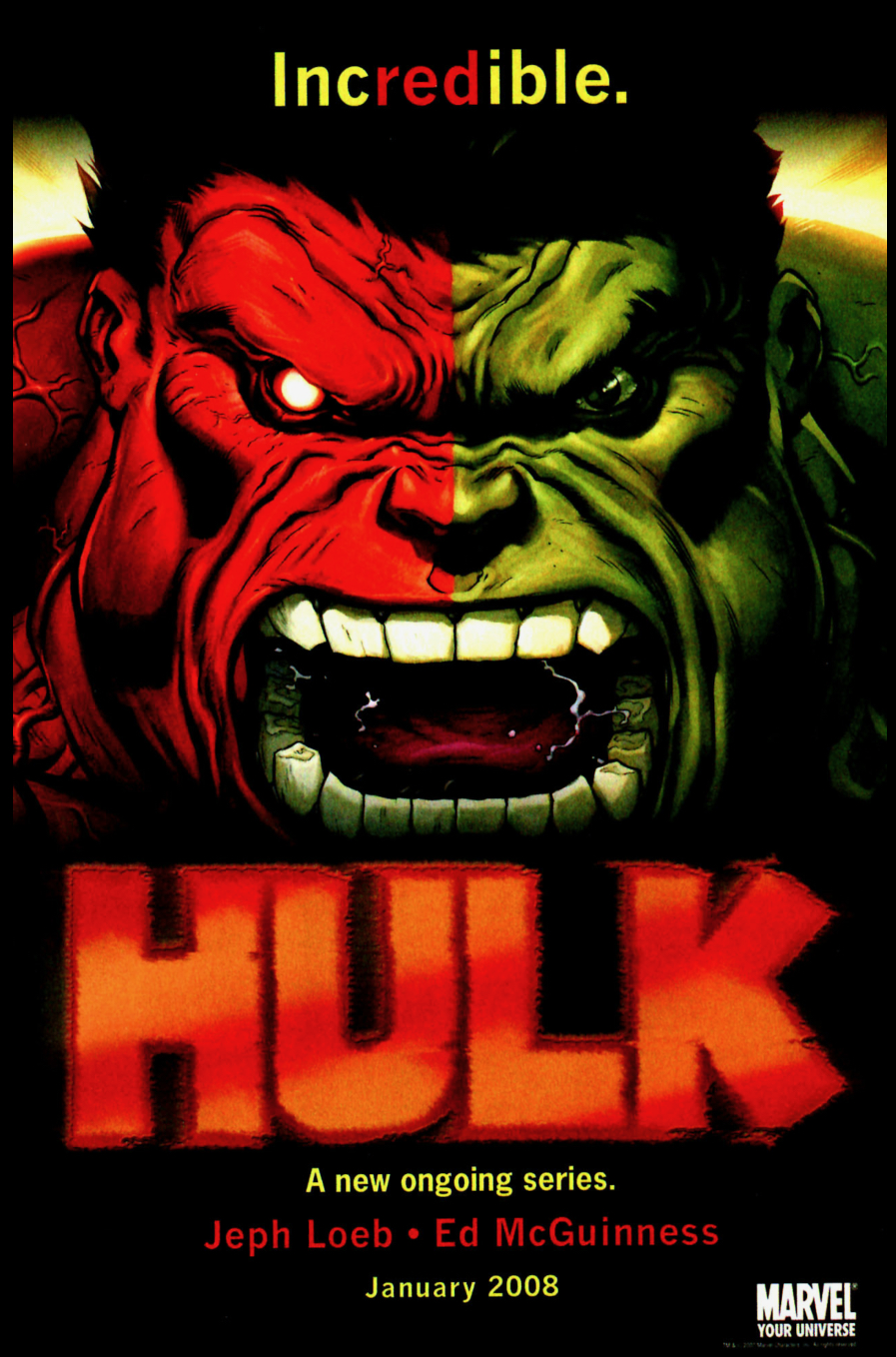
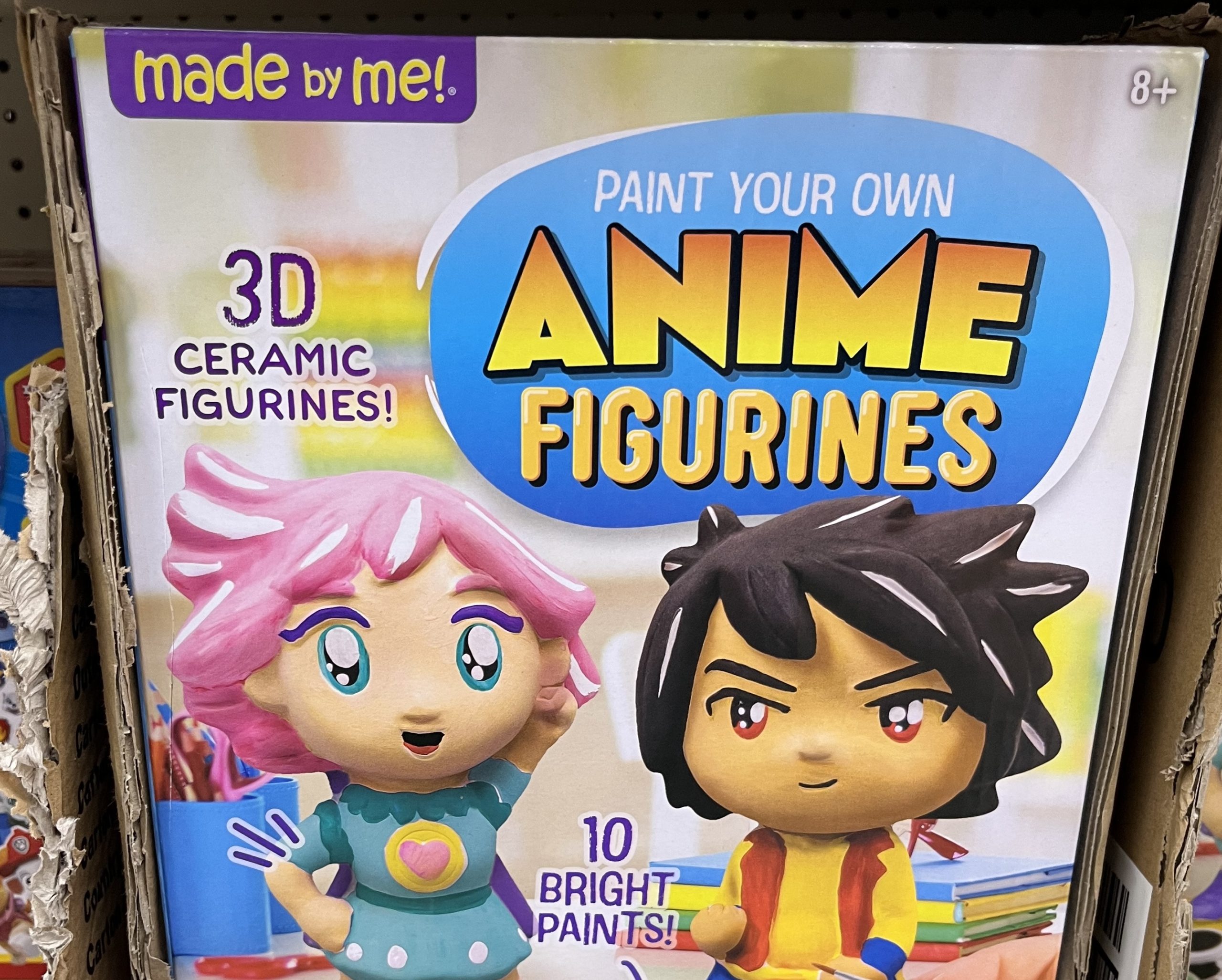
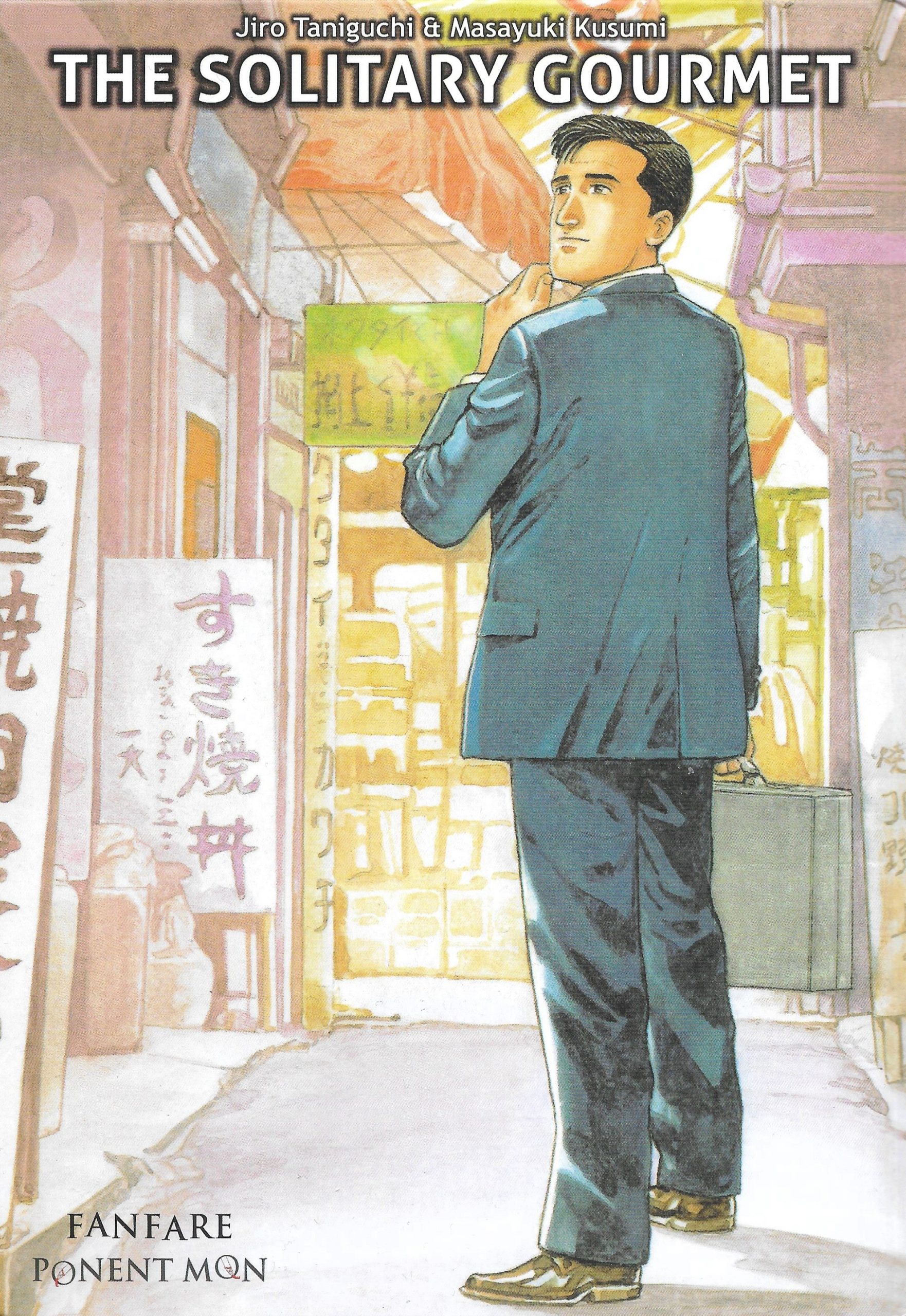
 English (US) ·
English (US) ·